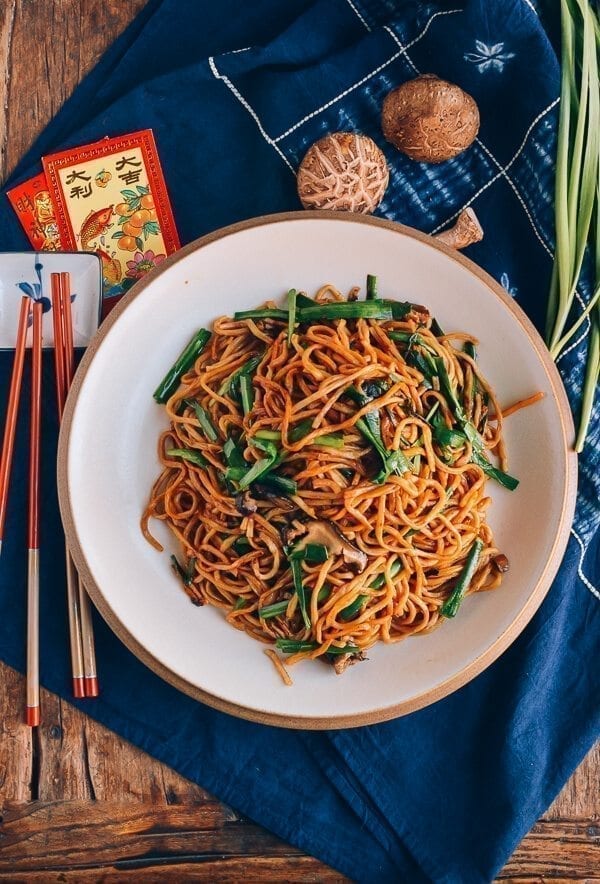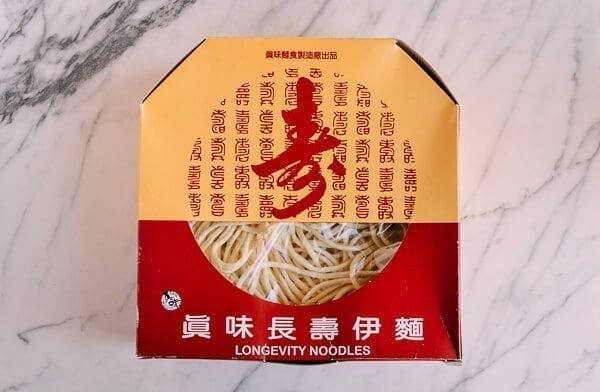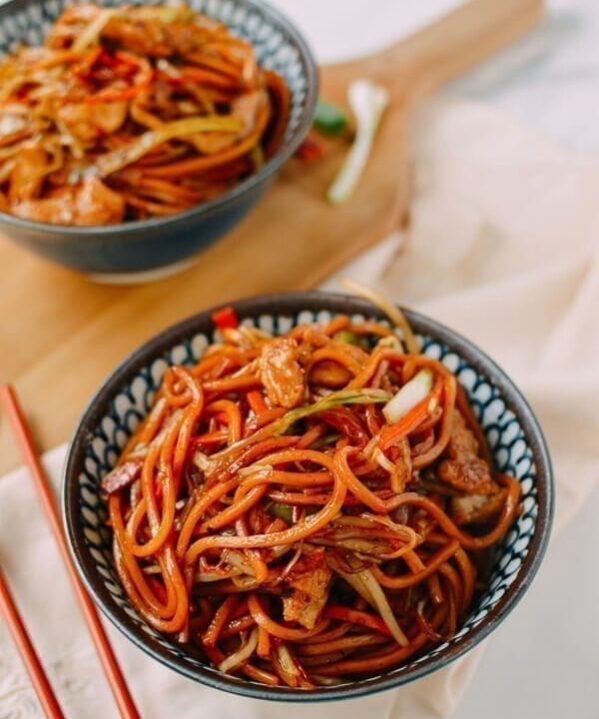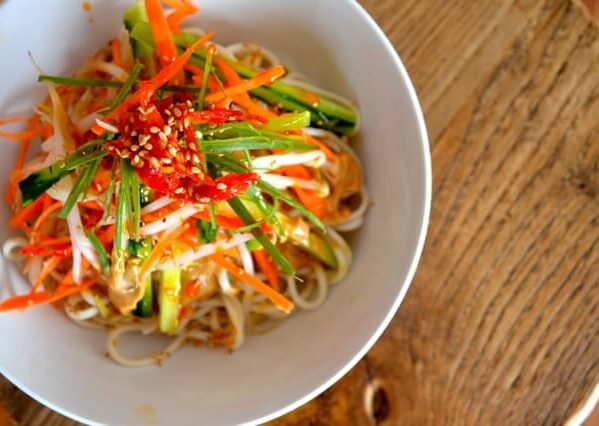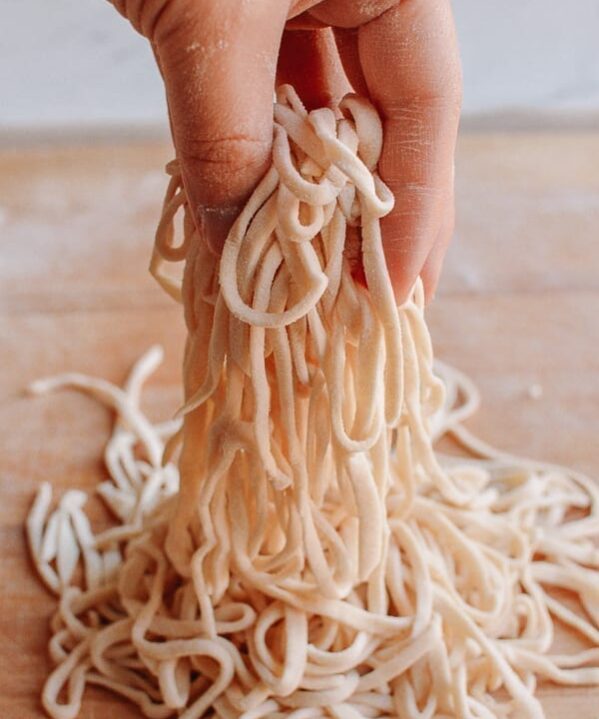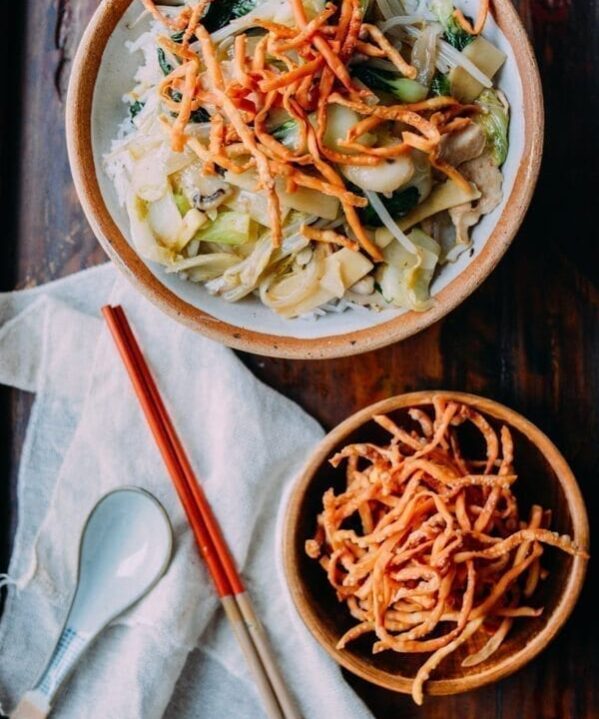Longevity Noodles (yī miàn, 伊面), also known as yi mein or e-fu noodles, symbolize long life and can always be found on the banquet table at Chinese celebrations.
Long noodles, long life, right? (We should make a t-shirt.) Actually, any type of long noodles symbolizes longevity, but Yi Mein (also known as e-fu noodles—try not to get confused by all these names flying around…yi mein is what I have known them as since I first tasted them as a chubby little kid, and it makes no difference to me!) are a more festive and traditional take on the idea.
A Celebratory Banquet Noodle Dish
Whether it’s a birthday, a new baby, a wedding, or a lunar new year banquet, long life noodles are an important aspect of all these happy events. If you’re lucky enough to have attended a Chinese banquet, you already know that Long Life Noodles and Banquet Fried Rice are two of the last items served.
Most people are so stuffed midway through the 10-course feast that these two last dishes are the straws that break the camel’s back, and they usually find their way into take-out containers.
There’s always someone—your weird uncle or chatty cousin—who wasn’t fast enough with their chopsticks or was circulating around the banquet hall too much to have time to eat, and makes a beeline for those takeout containers full of starchy goodness.
Better Cooked In Small Batches
That said, these noodles at large Chinese banquets can often be a bit soggy and tasteless, which is the problem with cooking them in large batches. That’s why it’s all the more worth it to make them at home. These longevity noodles are deliciously simple––usually served with some mushrooms and/or Chinese garlic chives.
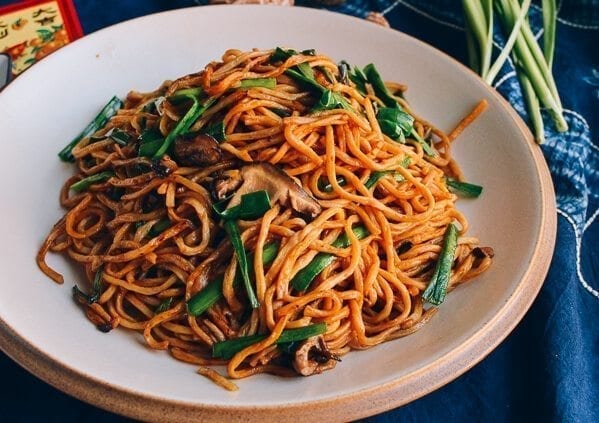
In addition to symbolizing longevity, eating noodles also signifies prosperity and good luck, which is why serving any kind of noodles for Chinese New Year (which is almost here!) is a good idea.
Yi Mein is often the noodle of choice due to its unique texture and taste, the result of using sodium bicarbonate or soda water for the dough. The noodles are also deep-fried before they are dried, which gives them a unique and slightly spongy texture.
Yi Mein noodles can be found in your Asian grocery store, usually in a red box with directions on how to prepare them. But like every successful recipe that is definitely *not* found on the side of a box, there are some important tips and tricks to know!
In this recipe, we’ll show you how to make these long life noodles so they have the perfect taste and texture for all your miscellaneous longevity needs. Let’s start!
Long Life Noodles: Recipe Instructions
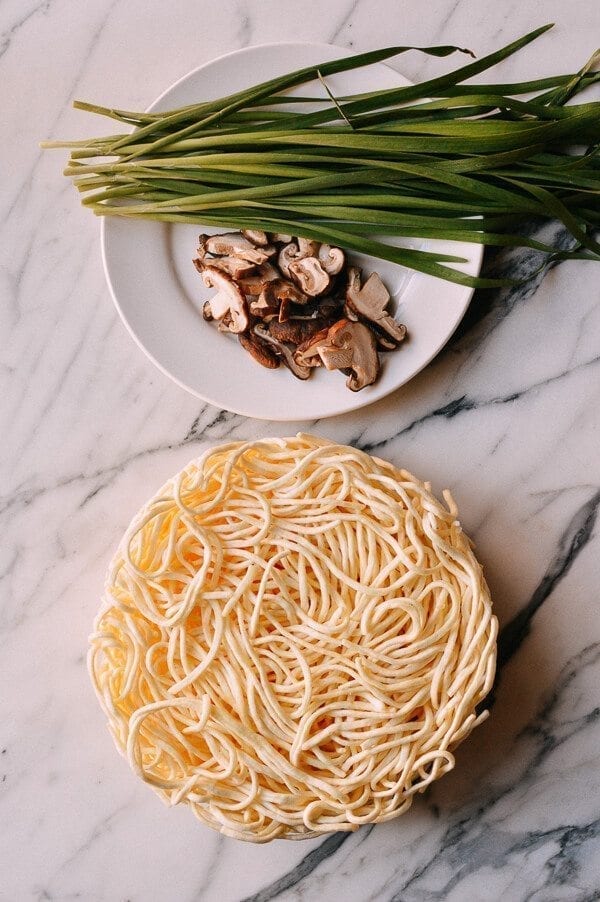
Boil 3 quarts of water in a large wok or pot to pre-cook your Yi Mein noodles. Once boiling, add the noodles.
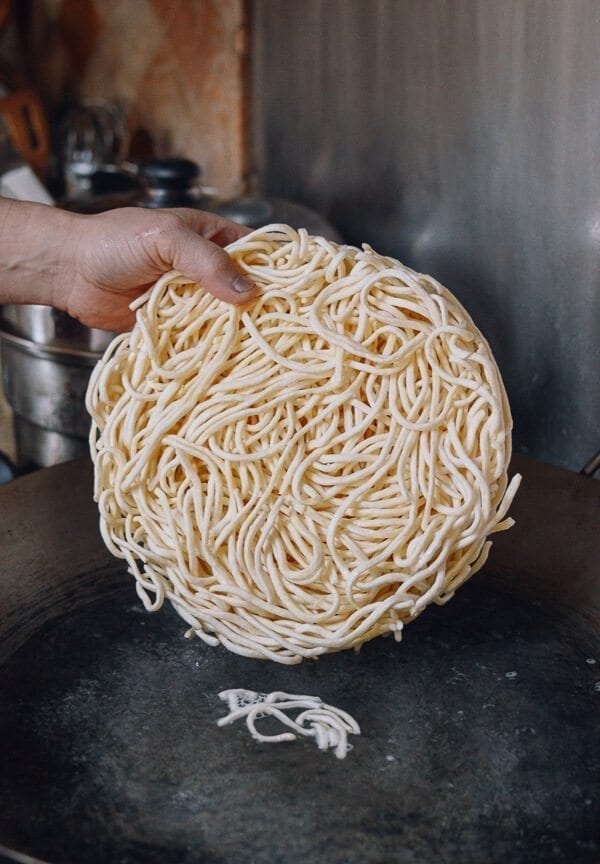
The directions on the box may say to boil the noodles for 5 minutes, but we recommend no more than 3 to 4 minutes to keep them firm and chewy. Overcook them, and you will end up with a mushy texture.
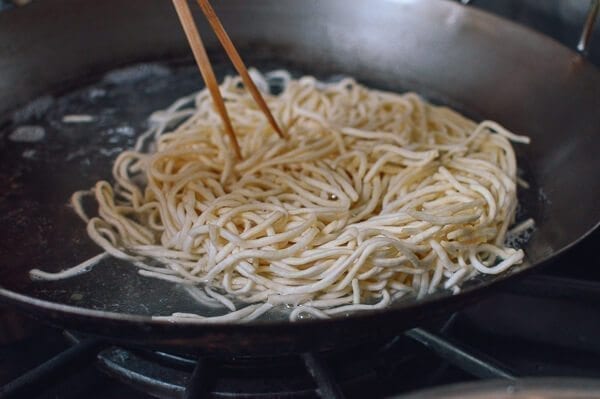
Sample a noodle while cooking, and when it tastes closer to the uncooked side of al dente pasta, it’s ready. When the noodles are done, immediately drain and set aside.
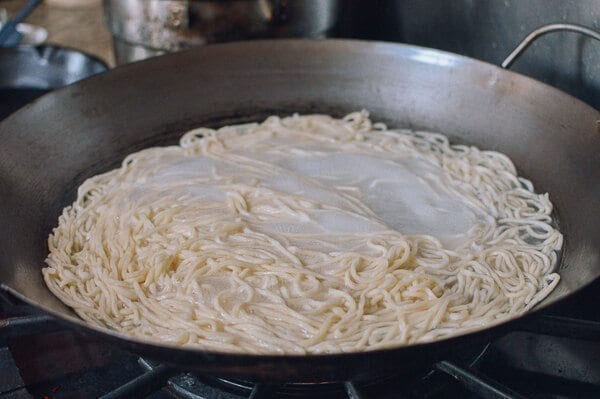
Dissolve the sugar and salt in 1 tablespoon of hot water, and add the regular soy sauce, dark soy sauce, oyster sauce, sesame oil, and white pepper. Stir until combined.
Heat the wok until just smoking, and spread 2 tablespoons of oil around the perimeter.
Add the shiitake mushrooms and the light green parts of the Chinese chives, and stir fry for 30 seconds. The mushrooms are like sponges and will soak up the oil, so add another tablespoon of oil if they look too dry.

Add the noodles (they still should be warm but with no water dripping), and stir fry everything for another 20 seconds. If they cooled off, just cook them a bit longer until they are warmed, because warming the noodles before adding the sauce is important!
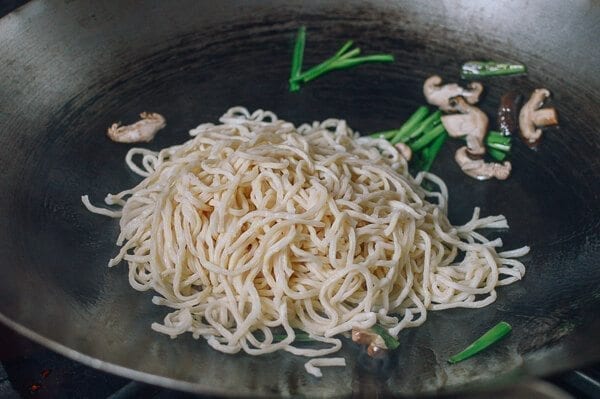
Spread the prepared sauce mixture evenly over the noodles, and stir-fry everything together for 1 minute, or until the soy sauce mixture is distributed evenly. Spread another tablespoon of oil around the perimeter of the wok to prevent sticking if you feel you need it.
How much oil you use is definitely a personal preference. If the noodles stick together, drizzle a bit of oil directly over the noodles. You can also add a splash of hot water if the noodles are too dry, even after adding the sauce.
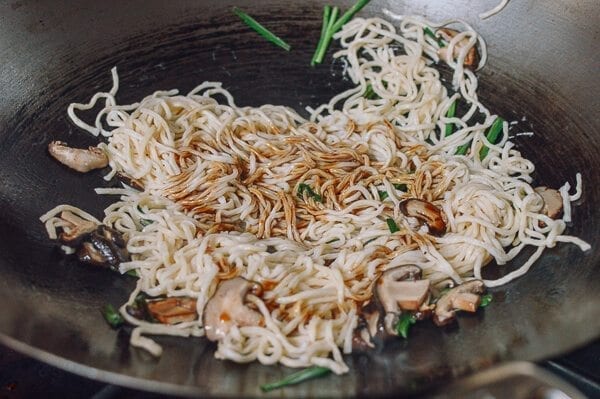
Mix gently so you don’t break up the noodles. Remember, you want to have long noodles to give longevity and prosperity to whoever’s going to be eating this dish!
Add in the remaining green parts of the chives and mix until they turn bright green and the noodles are heated through.
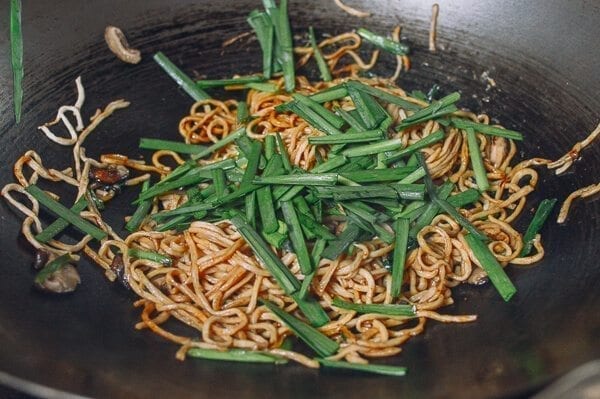
This will take 1-3 minutes, depending on if your noodles were cold or still warm when you started stir frying, and how hot your stove and wok can get.
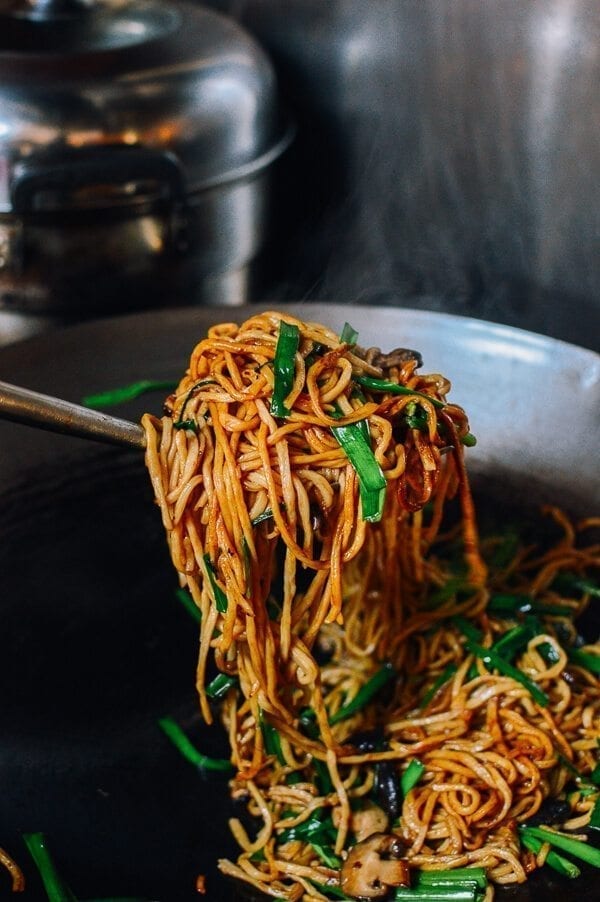
Plate and serve your long life noodles!
We recommend enjoying these noodles with some of Kaitlin’s Homemade Chili Oil!
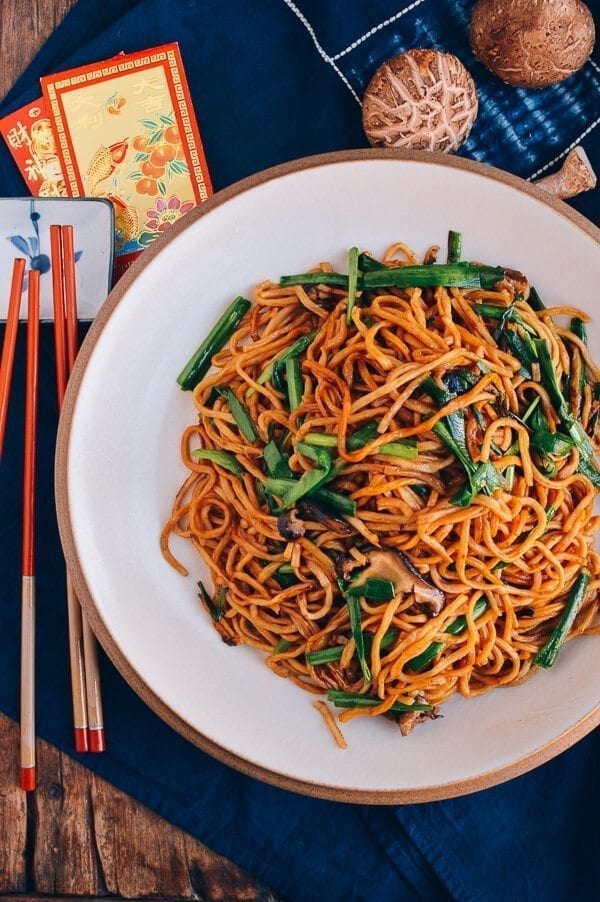
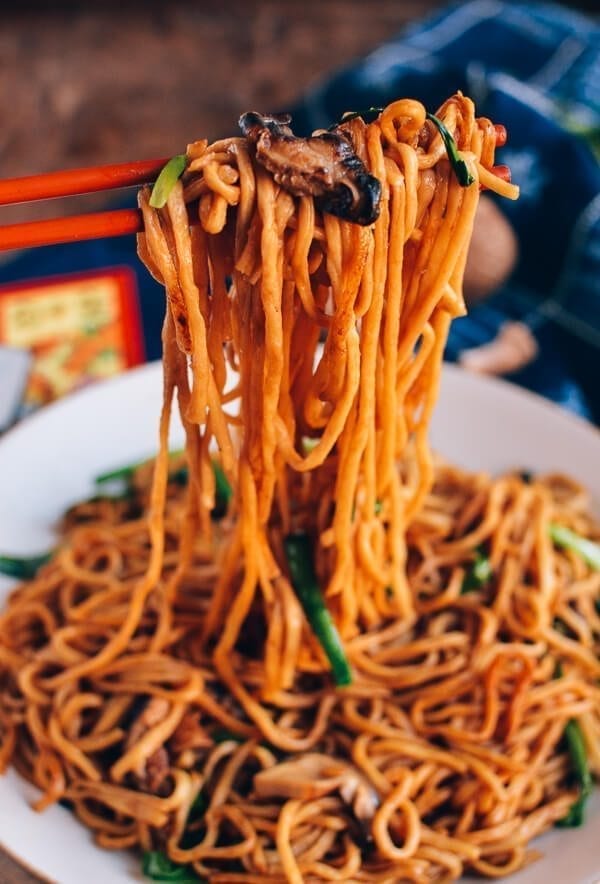
Long Life Noodles

Ingredients
- 3 quarts water (for pre-cooking the noodles)
- 12 ounces Yi Mein noodles (12 ounces/340g, dry)
- ⅛ teaspoon sugar
- ¼ teaspoon salt (or to taste)
- 1 tablespoon hot water
- 2 teaspoons regular soy sauce
- 2 teaspoons dark soy sauce
- 2 tablespoons oyster sauce (or vegetarian oyster sauce)
- 1/2 teaspoon sesame oil
- Freshly ground white pepper
- 3-4 tablespoons vegetable oil (divided)
- 5 shiitake mushrooms (fresh or dried/reconstituted; thinly sliced)
- 8 ounces Chinese chives (225g, cut into 2-inch long pieces, with the light and dark green parts separated)
Instructions
- Boil 3 quarts of water in a large wok or pot to pre-cook your Yi Mein noodles. Once boiling, add the noodles. The directions on the box may say to boil the noodles for 5 minutes, but we recommend no more than 3 to 4 minutes to keep them firm and chewy. Overcook them, and you will end up with a mushy texture.
- Sample a noodle while cooking, and when it tastes closer to the uncooked side of al dente pasta, it’s ready. When the noodles are done, immediately drain and set aside.
- Dissolve the sugar and salt in 1 tablespoon of hot water, and add the regular soy sauce, dark soy sauce, oyster sauce, sesame oil, and white pepper. Stir until combined.
- Heat the wok until just smoking, and spread 2 tablespoons of oil around the perimeter.
- Add the mushrooms and the light green parts of the chives, and stir fry for 30 seconds. The mushrooms are like sponges and will soak up the oil, so add another tablespoon of oil if they look too dry.
- Add the noodles (they still should be warm but with no water dripping), and stir fry everything for another 20 seconds. If they cooled off, just cook them a bit longer until they are warmed, because warming the noodles before adding the sauce is important!
- Spread the prepared sauce mixture evenly over the noodles, and stir-fry everything together for 1 minute, or until the soy sauce mixture is distributed evenly. Spread another tablespoon of oil around the perimeter of the wok to prevent sticking if you feel you need it. How much oil you use is definitely a personal preference. If the noodles stick together, drizzle a bit of oil directly over the noodles. You can also add a splash of hot water if the noodles are too dry, even after adding the sauce.
- Mix gently so you don’t break up the noodles–remember, you want to have long noodles to give longevity and prosperity to whoever’s going to be eating this dish!
- Add in the remaining green parts of the chives and mix until they turn bright green and the noodles are heated through. This will take 1-3 minutes, depending on if your noodles were cold or still warm when you started stir frying, and how hot your stove and wok can get.
